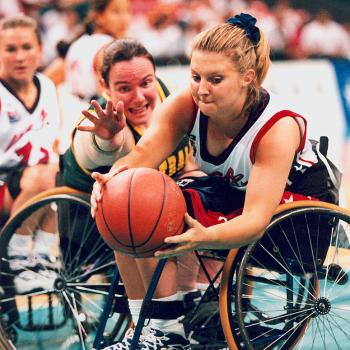
I’ve written on the topic of transgender Christians before, see the last two links in the list below. Today I want to answer a few questions that came up in the course of a private conversation concerning both gender dysphoria and body integrity identity disorder. The two are related in that both involve a sense that one’s (otherwise ordinary) body is profoundly wrong-as-created. The two are also related in that the moral (and thus physical) response to both conditions is essentially the same.
1. What do we mean by these disorders?
When we speak of Gender Identity Disorder, we’re speaking of a person who has a profound and sincere feeling of being the “wrong” gender. You are to all evidence physically male or female, and yet deeply sense that it should be the other way around. In Body Integrity Identity Disorder, we are speaking of a person who has a body part (typically a limb) that doesn’t feel like it “belongs”. The person desires to be rid of the “foreign” limb, and may eventually seek out professional or home-dispatched amputation.
2. Why are these such miserably thorny topics?
For the person experiencing this situation, the range of responses can run from “I must be some kind of horrible pervert for feeling this way” to “I am right, my body is wrong, I must take action to rectify my disordered body and make it match my sense of reality.”
For a variety of reasons, there is currently a strong social push for individuals to veer towards the must-do-surgery end of the spectrum.
3. Is it sinful to experience these thoughts or feelings?
No. Having a feeling, even a powerful and unavoidable feeling, is not in itself sinful.
4. Wouldn’t the best treatment be to give the person relief by making the body match the interior state?
No. This is not an option. The reason is that we can’t do evil that good may come of it. To mutilate an otherwise healthy body part would be to commit an act of brutality.
In both of these situations, though one feels profoundly dissatisfied with the body, there is in fact nothing in the body that needs to be “fixed.” Surgical alteration of the body would not treat the underlying condition. A surgical response would be akin to suggesting that a person with anorexia go ahead and try to lose a little more weight.
5. What are moral treatment options?
Moral treatment options include any course of action that seeks to treat the underlying condition or provide relief from symptoms, and that does not in the process commit a direct evil. Any side effects of the proposed course of treatment would need to be proportionate to the benefits involved.
At this time I’m not aware of a magic remedy. My impression is that these situations are about as difficult to deal with as anorexia nervosa, another notoriously stubborn cause of body-dysphoria.
6. In other words, if you don’t have a moral way to relieve your suffering, you have to suffer?
Yes. The humane impulse to relieve suffering is a good one, but it is not an absolute good. Sometimes we simply do not have a way to avoid a difficult situation.
7. Is there a place for people in these situations in the Church?
Yes.
(Um, no special place. Just take a seat in the pews with everyone else.)
8. What if you’ve already committed some kind of grave evil against yourself?
Who hasn’t?
Related Links:
- When Should You Go to Confession?
- Confession Primer: Forgetting to Confess a Mortal Sin
- Marriage and Equal Protection by Robert P. George
- The Wrong Kind of Rights: Same-Sex Marriage, Third-Party Reproduction, and the Sexualization of Children by Jean Lloyd
- Speaking Out About the Transgender ‘Delusion’, National Catholic Register
- Did I Become Catholic Because I Hate Women? Fr. Dwight Longenecker
- Transgender Nuns, Ho-Hum
- Transgender Children: What is a Christian Parent to Do?
Artwork: [CC BY 4.0], via Wikimedia Commons












